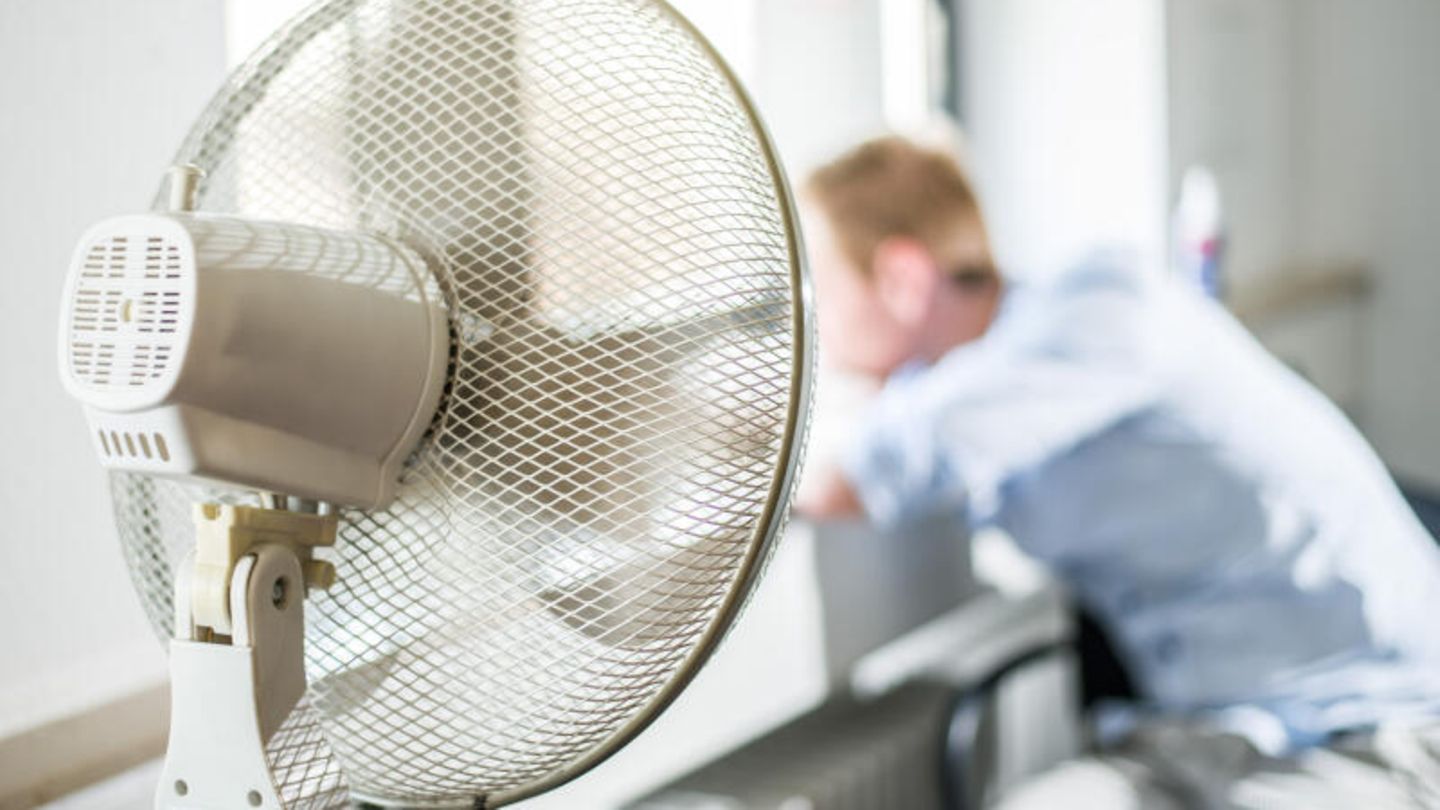The heat wave has Germany firmly in its grip. If you’re not on vacation, you still have to go to work. But what rights do employees have in such high temperatures? An overview.
It’s also getting hot in Germany now. Really hot. The German Weather Service has announced the warmest days of the year so far for Tuesday and Wednesday, with temperatures sometimes exceeding 40 degrees Celsius. Those who are on vacation can cool off in the outdoor pool or in the ice cream parlour. For many employees, however, sweaty working days are ahead. What laws apply in the workplace and what rights do employees have as the thermometer continues to rise?
Heat at work: Employees have these rights
In Germany, the Occupational Health and Safety Act and the Workplace Ordinance define exactly how workplaces must be designed. With regard to high temperatures, three values are particularly important here: 26 degrees, 30 degrees and 35 degrees Celsius. Above these values, employers are encouraged or obliged to take measures to keep the working atmosphere tolerable.
Measures from 26 degrees Celsius:
Basically, the room temperature in offices, for example, should not rise above 26 degrees. “A room temperature of more than 26 degrees is only permissible if factories and offices are well insulated against summer heat, windows and glass walls have sun protection and the outside temperature exceeds 26 degrees,” explains the IG Metall trade union. This means that an employer should take measures such as blinds in front of the windows above this temperature. However, this is not legally obligatory.
Measures above 30 degrees Celsius:
Companies only have to cool down when the room temperature exceeds 30 degrees Celsius. That doesn’t mean, however, that air conditioning will soon be installed in many offices. The “further reduction in climatic stress” means, for example, that the sun protection can be “effectively controlled”, that blinds remain closed even after work, or that the workplaces are ventilated in the morning hours. In addition, heat sources such as printers must be removed from the workrooms and their use must be restricted. If possible, the flextime regulation should be extended and the dress code relaxed. Drinks are also to be provided by the employer.
Measures above 35 degrees Celsius:
If it gets even warmer, the third level of occupational safety comes into effect from 35 degrees Celsius. It is not possible to work from this room temperature. Now the employer must provide tools, such as air showers, fans or heat breaks – such as when working on blast furnaces.
However, if these tools are not available, this does not mean that the employees can simply go home, but only that they have to work in cooler rooms. There is no legal entitlement to heat-free in Germany.
In addition, it can be agreed that working hours are shifted to earlier or later hours of the day in order not to be in rooms that are too warm for too long.
What regulations apply in the home office?
There is no longer a home office obligation, but many employees still work from home. In terms of heat protection, however, things get a little more complicated here. Whether the employer is responsible for a bearable workplace or not is indirectly stated in the employment contract. If it is noted here that the employment relationship is based on so-called “teleworking”, the employer is obliged to comply with the principles of occupational safety even for employees working from home. This includes the right office furniture, lighting conditions and heat protection. In this case, the employee in the home office has a right to the same tools as the colleagues in the office.
However, if it is noted that the employment relationship is based on a “mobile work” regulation, the employer is not responsible for any heat protection measures.
What regulations apply to working outdoors?
Even or especially when working outdoors, such as in the construction or gardening trades, workers are exposed to particular stress. There are health hazards due to direct sunlight and the possibly even higher temperature. “The employer must carry out a risk assessment for these activities and, if necessary, take suitable protective measures and document them,” says the Federal Institute for Occupational Safety and Health, as reported by ZDF.
Possible measures would be awnings or umbrellas, storage facilities for breaks and flexible working hours to minimize heavy work between 11 a.m. and 3 p.m. as far as possible.
Sources: ,
Source: Stern
Jane Stock is a technology author, who has written for 24 Hours World. She writes about the latest in technology news and trends, and is always on the lookout for new and innovative ways to improve his audience’s experience.




